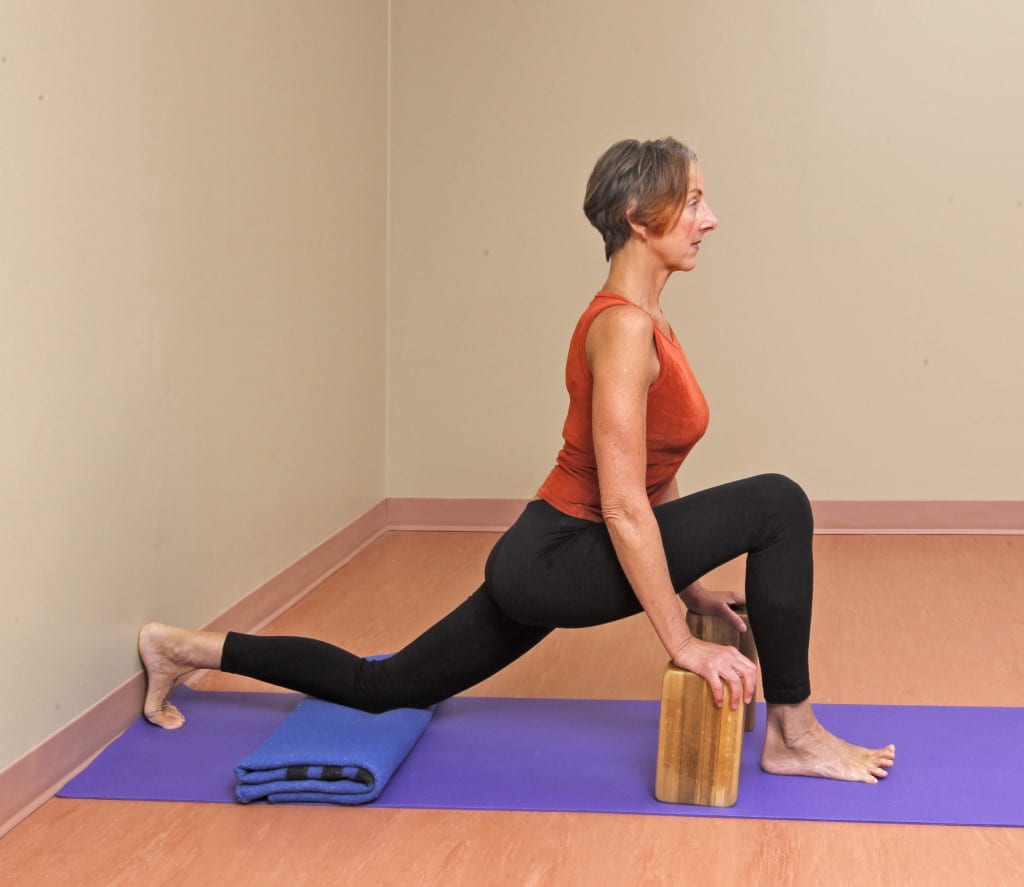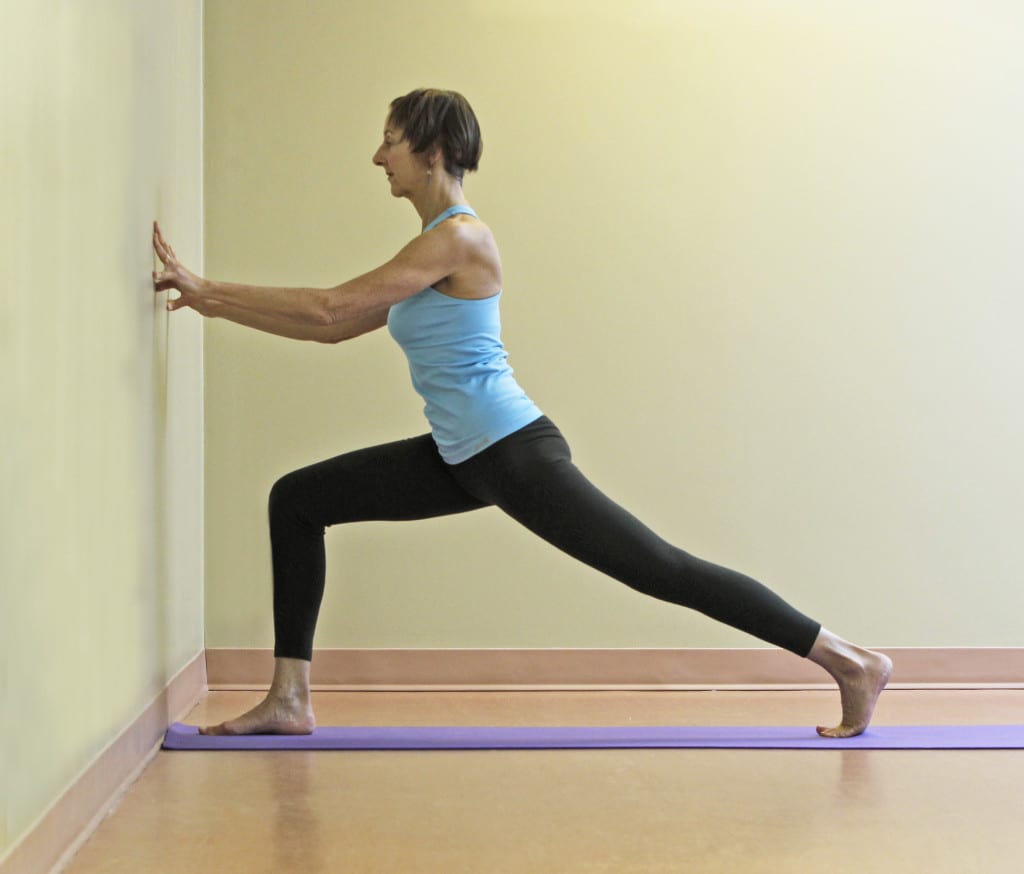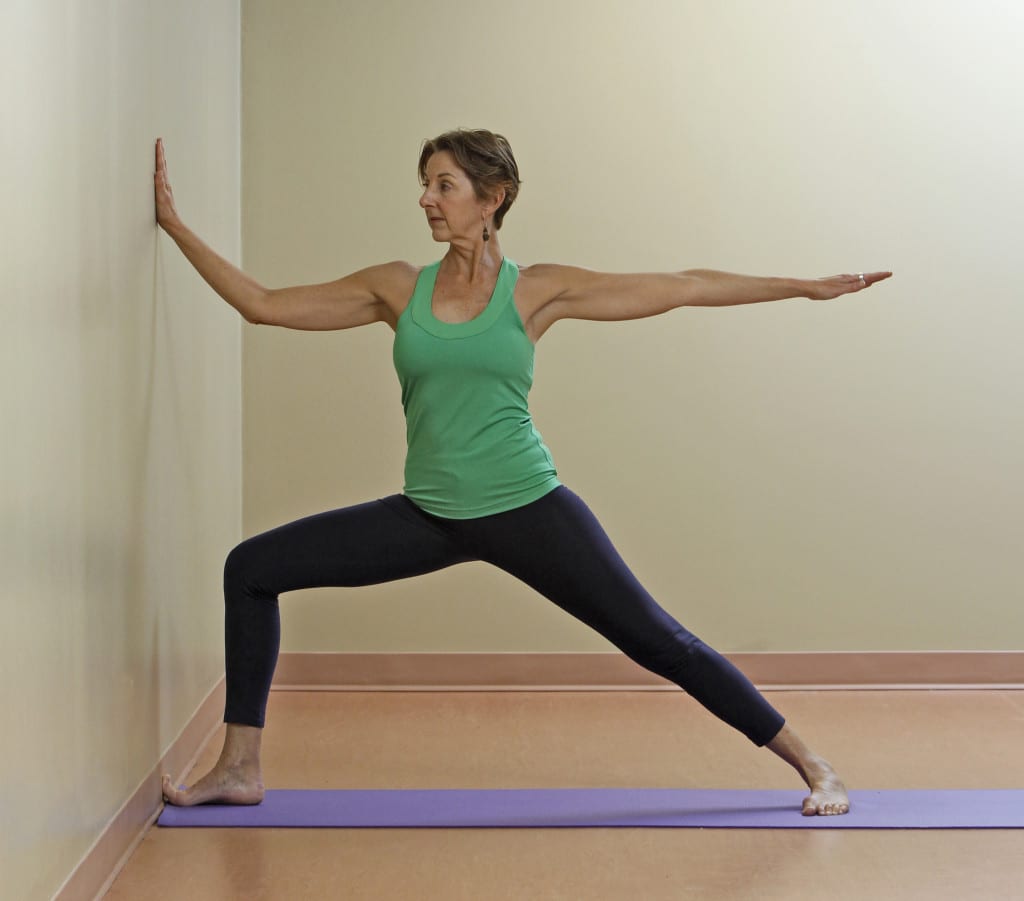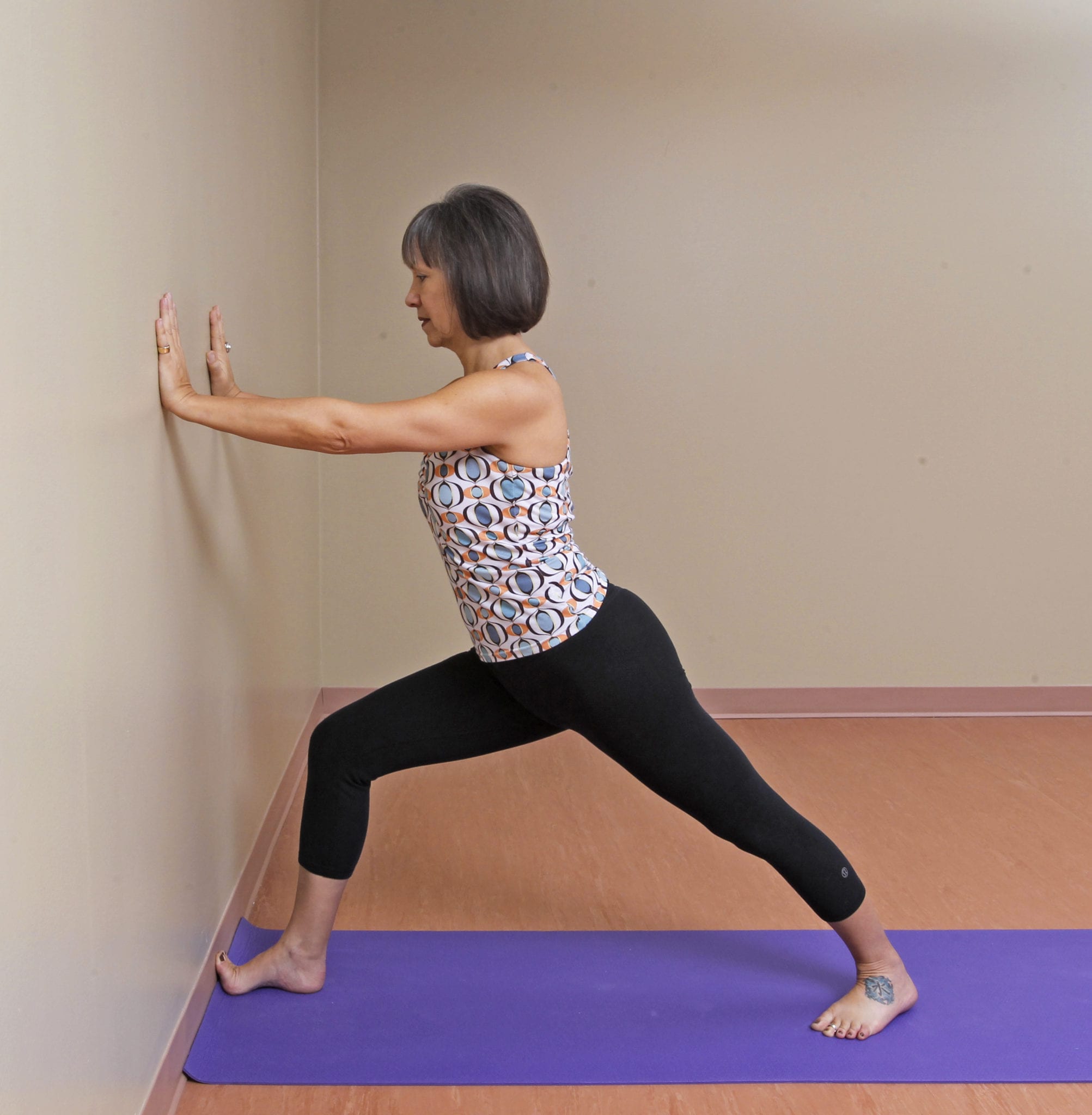Even before reaching middle age, many sports enthusiasts and athletes find themselves challenged with “bad knees.” Disease, a family history of arthritis, improper bone alignment and long-term repetitive movement are all sources of knee pain. Furthermore, as the largest joints in the body, the knees are naturally unstable due to the shallow interlock between the ends of the thighbones and shinbones. Because our knee joints are crucial to weight-bearing, walking, running, deep bending, straightening as well as balancing the effects of gravity, keeping them healthy and pain-free is both a priority and a possibility. As a result, maintaining strong, flexible, happy knees needs to be a focus in any physical practice including yoga. On the bright side, both Candace and Helen healed their own knee injuries with yoga actions for aligning their knee joints as well as opening their outer hips.
This week’s column looks at proper knee joint alignment given that peoples’ common reaction to knee pain is to become more sedentary. Reducing our weight-bearing activity, as the only solution for eliminating pain, has an adverse effect on our bones and cartilage. Knee cartilage is kept healthy by moving the joint through its full range of motion. In addition, lack of movement and exercise weaken the superficial large leg muscles most importantly the front thigh muscles (quadriceps). Weak quads increase the risk of misaligned leg bones resulting in cartilage tears or even osteoarthritis due to constant grinding of bone against cartilage. Becoming mindful of our movements during our daily activities corrects many such unhealthy habits.
For healthy knees, be conscious of where they are in space. Our feet help to indicate the knees’ necessary location. The awareness actions outlined below are crucial for creating mindfulness, building strong muscles and enabling knee health.
Action: Keep the centre of your knee tracking toward your second toe. Do this with straight or bent knees and particularly when you move in and out of a bent knee position.
For more advanced yogis and yoginis, maintain the above action and breathe into your knee joints as if breathing into a balloon. This softens and creates space in your knees.

Low Lunge
Stand away from the wall. Keep your right foot where it is and step your left foot to the wall as you place your hands onto blocks. Place the toes of your left foot on the floor and the heel at the wall. As you start to take your left knee to the floor, keep your right knee in line with your right second toe. Walk your right foot forward until it’s under your right knee. Your left heel may come away from the wall but keep it pointing straight up. Draw a line from your left knee to your left second toe. Repeat the actions with the left foot forward and the right back.

Virabhadrasana I (Warrior I) Variation
Begin by standing close to the wall with both feet pointing forward and hands resting on the wall. Keep your right foot where it is and step your left foot well back. Come up onto the toes of the left foot with the left heel pointing straight up. As you bend your right knee keep it tracking to your right second toe. Be sure your left knee also tracks to the second toe of the left foot. Reverse the legs and repeat the actions.

Virabhadrasana II (Warrior II) Variation
Begin by facing the wall. Place your right toes up the wall with the sole firmly on the floor. Rest your right hand at the wall. Step your left foot well back. As you turn your left leg and foot out, keep your knee and toes pointing in the same direction. As you bend your right, knee keep it tracking to your right second toe. Repeat the actions with the left foot forward and the right back.
For more yoga actions, refer to Helen and Candace’s Creating Space: Yoga Actions for Legs & Knees.





